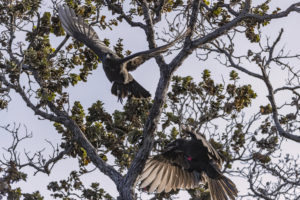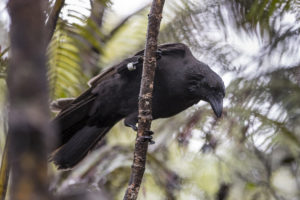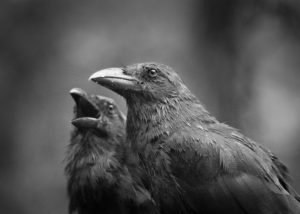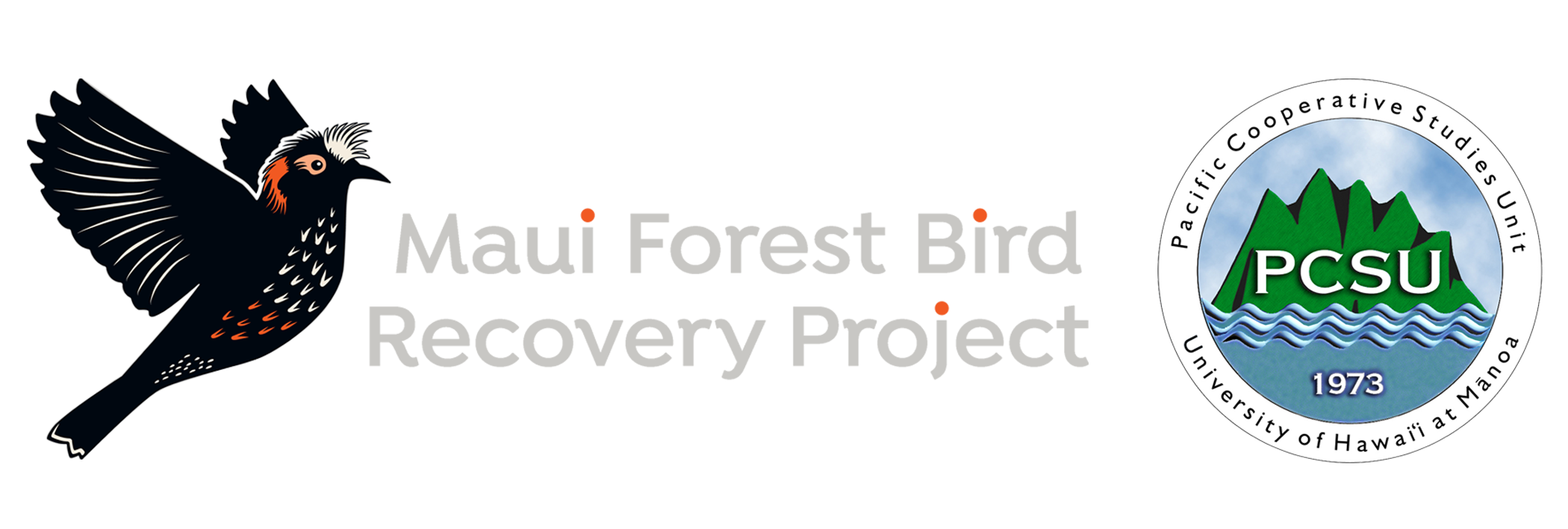ʻAlala Recovery
RESTORING HAWAIʻIʻS NATIVE CROW TO THE WILDʻAlalā (Hawaiian Crow; Corvus hawaiiensis) is the last endemic Corvid species found in the Hawaiian Islands. They are now considered extinct in the wild.
Fossil evidence shows that Corvus hawaiiensis, or a very similar subspecies, was found on Maui and Hawaiʻi Islands. Their documented range on Hawaiʻi Island covered forest habitats from about 1,000 to 8,000 feet in elevation. ʻAlalā were known to exist throughout their historic range on Hawaiʻi Island from the 1800ʻs, but the wild population started to decrease dramatically. By 1976 there were only 76 individuals, and by 1992 there were only 13. In 2002 the last pair of birds was seen in the wild.
Like many other native forest bird species, ʻalalā are primarily threatened by non-native species, loss of habitat, and introduced diseases. Wide-scale deforestation for agriculture and livestock grazing has reduced the amount of forest cover on the islands to a fraction of previous levels. The subsequent addition of invasive plant and animal species further eroded the extent of native forest and reduced forest quality throughout the island. Furthermore, introduced diseases — avian malaria, pox, and toxoplasmosis — have impacted ʻalalā survival. Non-native vectors such as mosquitoes and free-ranging cats spread these diseases.
Species Status: Extinct in the Wild
ʻAlalā are the sole surviving member of 5 endemic corvid species once found on at least four of the main Hawaiian Islands. Fossil evidence shows ʻalalā, or a similar subspecies, to have been present on Maui and Hawaiʻi Islands. The last wild individuals were documented in the forest of the South Kona district on Hawaiʻi Island.
Conservation Breeding
Reintroduction
Attempts to reintroduce ʻAlalā into the wild in the 1990s and from 2016 to 2019 resulted in high mortality rates, and surviving birds were returned to captivity. Many of the mortalities were due to a native predator, ‘io (Hawaiian Hawk), as well as introduced predators and inclement weather. The partners of The ʻAlalā Project began working towards the next steps in the reintroduction process. Reintroduction efforts shifted to releasing birds within Maui Nui, where ‘io do not occur. In late 2024, Maui Forest Bird Recovery Project released five young ʻAlalā on the slopes of Haleakalā in the Kīpahulu Forest Reserve on Maui. The release of ‘alalā on Maui is part of a longterm effort to bring ‘alalā back to Hawai’i Island in the future. If we are able to increase their numbers in the wild and encourage wild behaviors, they may be able to coexist with ‘io in the future as they once did in the past.
Over the last few years, MFBRP and partners have drafted conservation plans for the introduction of ‘alalā to Maui. This included submitting an environmental assessment, securing permitting, identifying funding, creating a translocation plan, conducting working group meetings, cultural and biological assessments, determining and preparing field sites, and training the birds for life in the wild. Five ‘alalā were moved to their release aviaries in October 2024 and released on the landscape in November 2024. Maui Forest Bird Recovery Project monitors the five young birds daily, and provides supplemental food to assist the birds with their transition from the captive breeding facility.
Learn More
- Department of Land and Natural Resources. (2024, December 4). Historic First Release of ‘alalā in East Maui.
- Department of Land and Natural Resources. (2024, October 9). ʻAlala begin journey back to the wild on Maui.
- U.S. Fish & Wildlife Service. (2024, February 29). U.S. Fish and Wildlife Service, State, Announce Final EA and FONSI for Pilot Release of ʻAlalā on East Maui.
- Maui News (2025, April 15). ʻAlalā show resolve five months after release in East Maui forest.




Save the Forest, Save the Birds
It takes a community of dedicated individuals and support to make conservation happen

